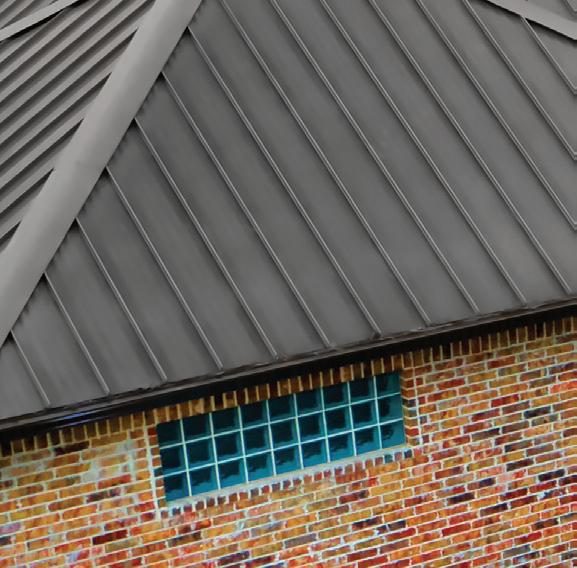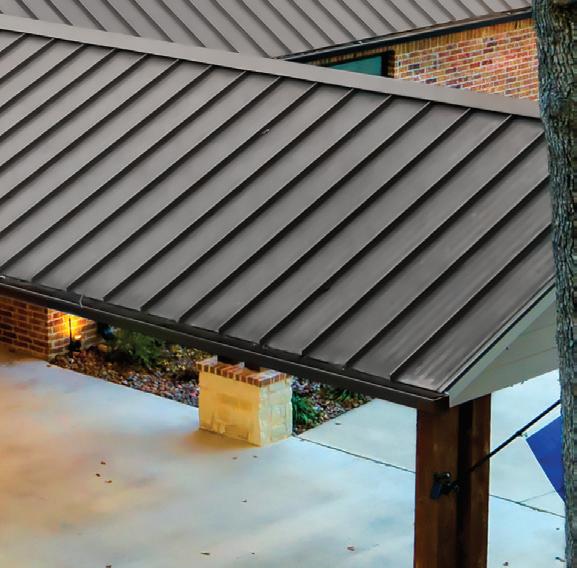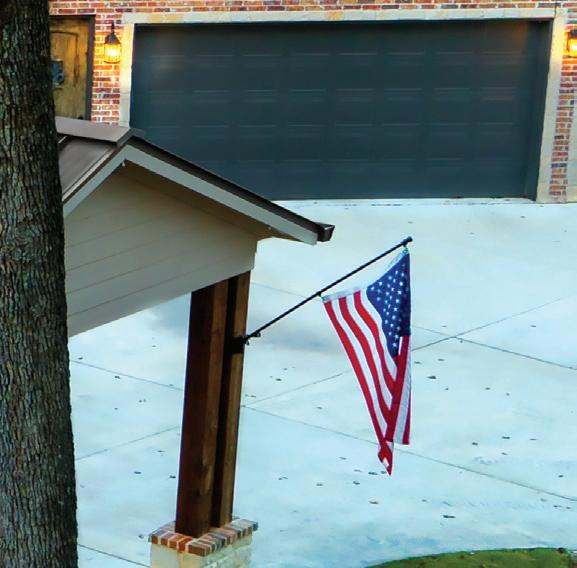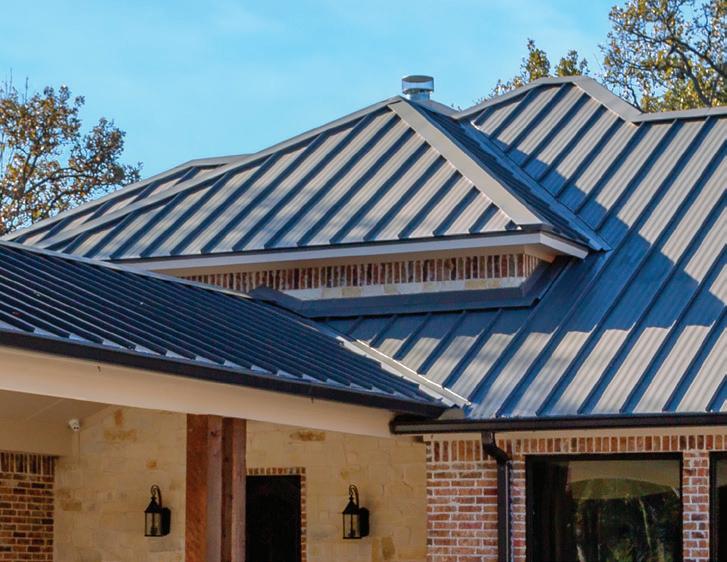












WSTE and Del Sol volunteer for the Louisiana Special Olympics Summer Games Page 21


A



contestant

















This spring, Louisiana—along with most southeastern states—weathered a series of severe storms. Association of Louisiana Electric Cooperatives, demonstrating its resilience, was able to activate our mutual aid network on a smaller scale to assist our cooperatives with restoration efforts caused by these isolated storms in the southeast. As we enter hurricane season, we stand prepared, fortified by our mutual aid efforts.
Co-ops, united by a spirit of cooperation and community, prepare for major outages and disasters through mutual aid—a collaborative approach to emergency planning. The mutual aid model allows electric co-ops to support each other during times of need. This approach permits co-ops to “borrow” restoration workers from other co-ops, thereby increasing the workforce response to areas impacted by a major outage. It’s essentially about neighbors helping neighbors, even when those neighbors are fellow co-ops located hundreds of miles away.
Electric co-ops operate according to Seven Cooperative Principles. Principles six and seven, Cooperation among
Cooperatives and Concern for the Community, are directly connected to the mutual aid network.
Electric co-ops were formed to provide safe, affordable, reliable electricity to our member-consumers. Being able to restore power efficiently following storms is part of our DNA. During major outages, a variety of equipment is needed to complete repairs, including bucket trucks and other specialized vehicles, utility poles, transformers and wires. Skilled lineworkers, tree trimmers, damage assessors and other key personnel are also often shared among co-ops. These experts provide critical skills and manpower to speed up the restoration process.
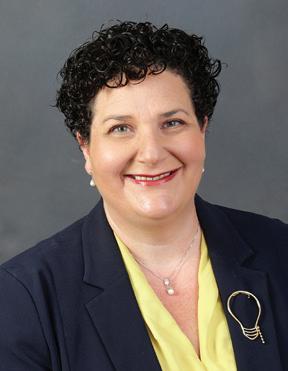
the necessary personnel and equipment, the key ingredients of the mutual aid recipe. These efforts require effective logistics management and experts who fully understand resource allocation and have the know-how to respond under pressure, providing a strong support system for our mutual aid efforts.
ALEC is a nonprofit organization representing the electric distribution cooperatives operating in Louisiana. The Louisiana Electric Cooperatives serve roughly 1 million citizens in 50 parishes. Our mutual aid network, consisting of 26 states working closely with their statewide associations, provides an abundant supply of personnel and equipment when needed most for storm recovery.
Disaster response and mutual aid, crucial aspects of our operations, are managed by electric co-ops and our statewide organizations. These organizations play a vital role in coordination between states, ensuring
Staff
CEO Addie Armato
SAFETY COORDINATOR Ricky Melancon
COMMUNICATIONS AND DIGITAL MARKETING
SPECIALIST Conley Bourgeois
ADMINISTRATIVE ASSISTANT Rhianna Garon
CREDIT UNION
Tanya Carroll, manager
Jody Overhultz, representative
President Dennis Glass
Vice President Michael Heinen
Secretary/Treasurer Roger Dale DeHart
Buxton
Marcotte Lane Davidson
Daniel Berthelot Richard “Dickie” Sitman
Michael Heinen Byron Hardee
Trevor Benoit Roger Dale DeHart
Joe Jarrell Dennis Glass Associate



the source of Louisiana’s food traditions Page 12

WASHINGTONST. TAMMANY ELECTRIC OFFICES
Main office
950 Pearl St. (P.O. Box 697)
Franklinton, LA 70438
Phone: 985-839-3562
www.wste.coop
Additional offices
21504 Mire Drive
Abita Springs, LA 70420
13526 Hwy. 40 Folsom, LA 70437
2081 E. Gause Blvd.
Slidell, LA 70459
GENERAL MANAGER
DANE HOCOTT
BOARD OF DIRECTORS
Dr. Francis Cefalu | President
Dennis Glass | Vice President
Olander Smith | Secretary
Glenn Magee | Treasurer
Joe Jarrell Jr.
Chris Graves
Billy Wayne Rester
Charles Singletary
Nickey Smith
Summer is here, school is out, and families are gearing up for a few months of fun and relaxation.
While summer brings plenty of fun in the sun, it can also bring the occasional severe weather as we’ve already seen with a series of intense spring storms in our area recently. They can cause substantial damage and flooding.
In the event of a power outage, you can trust Washington-St. Tammany Electric is prepared and ready to respond in a safe and timely fashion.
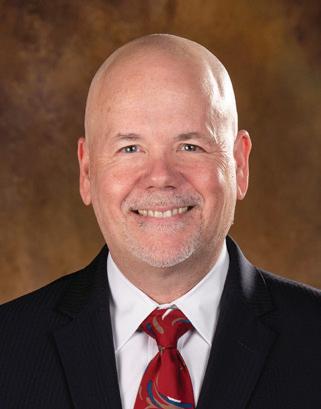
Though unexpected service interruptions can come from any number of problems, most power outages are caused by damage to power lines due to fallen trees and branches.
We work year-round, primarily through right-of-way clearing, to ensure power lines in our service territory stand little risk of being damaged by trees, branches or other types of vegetation.
Despite our best efforts, during major storms, damage can occur to transmission stations, substations, power lines or other equipment exposed to the weather.
When this happens, our priority is to safely restore power to as many members as possible in the shortest amount of time.
We start by mobilizing our line crews and other critical staff. Our line crews inspect metering points, substations and feeders to determine the problem. If the root of the problem is at the substation, power can be restored to thousands of members with one repair.
When crews check the service lines that deliver power into neighborhoods and communities it becomes more challenging to find the issue. If we have restored power in your area and you continue to experience an outage, there may be damage to equipment outside your home or business. Call us at 866-672-9773 or use your free SmartHub app to report outages.
We do our very best to avoid power outages before they occur, but we also know that sometimes Mother Nature has other plans. Be safe.
Louisiana Country (USPS 473-180) is published bimonthly by the Association of Louisiana Electric Co-ops Inc., 10725 Airline Hwy., Baton Rouge, LA 70816, in partnership with Pioneer Utility Resources.
Annual subscriptions: Members $2.30. Nonmembers $5.
Postmaster: Send form 3579 to 10725 Airline Hwy., Baton Rouge, LA 70816.
Periodicals postage paid at Baton Rouge, Louisiana 70821, and additional mailing offices.
The Lucky Account Number Contest continues this month with two winners included in this edition of Louisiana Country. Before you look through this edition for your winning number, find your account number printed above your mailing address. Spot that number anywhere in this issue and you win $50. To claim your prize, call 985-839-3562.

























ABOVE: Association of Louisiana Electric Cooperatives staff gather before a busy day.
RIGHT: From left are Dane Hocott, Washington-St. Tammany Electric Cooperative; Randy Pierce, DEMCO; Addie Armato, ALEC; Joe Jarrell, WSTE; Mike Heinen, Jeff Davis Electric Cooperative; Louisiana’s Department of Agriculture and Forestry Commissioner Mike Strain; Matt Peters, South Louisiana Electric Cooperative Association; Johnny Bruhl, WSTE; and Kevin Turner, Beauregard Electric Cooperative Inc.
BELOW: From left, Randy Pierce, DEMCO; Dane Hocott, WSTE; Mike Heinen, JDEC; Matt Peters, SLECA; and Addie Armato, ALEC, meet with Gov. Jeff Landry’s office to discuss cooperative issues.
Association of Louisiana Electric Cooperatives and members hosted the Taste of Louisiana Cookout for elected officials. The afternoon was spent at the Capitol, meeting with legislators and ended with some Louisiana home cooking.
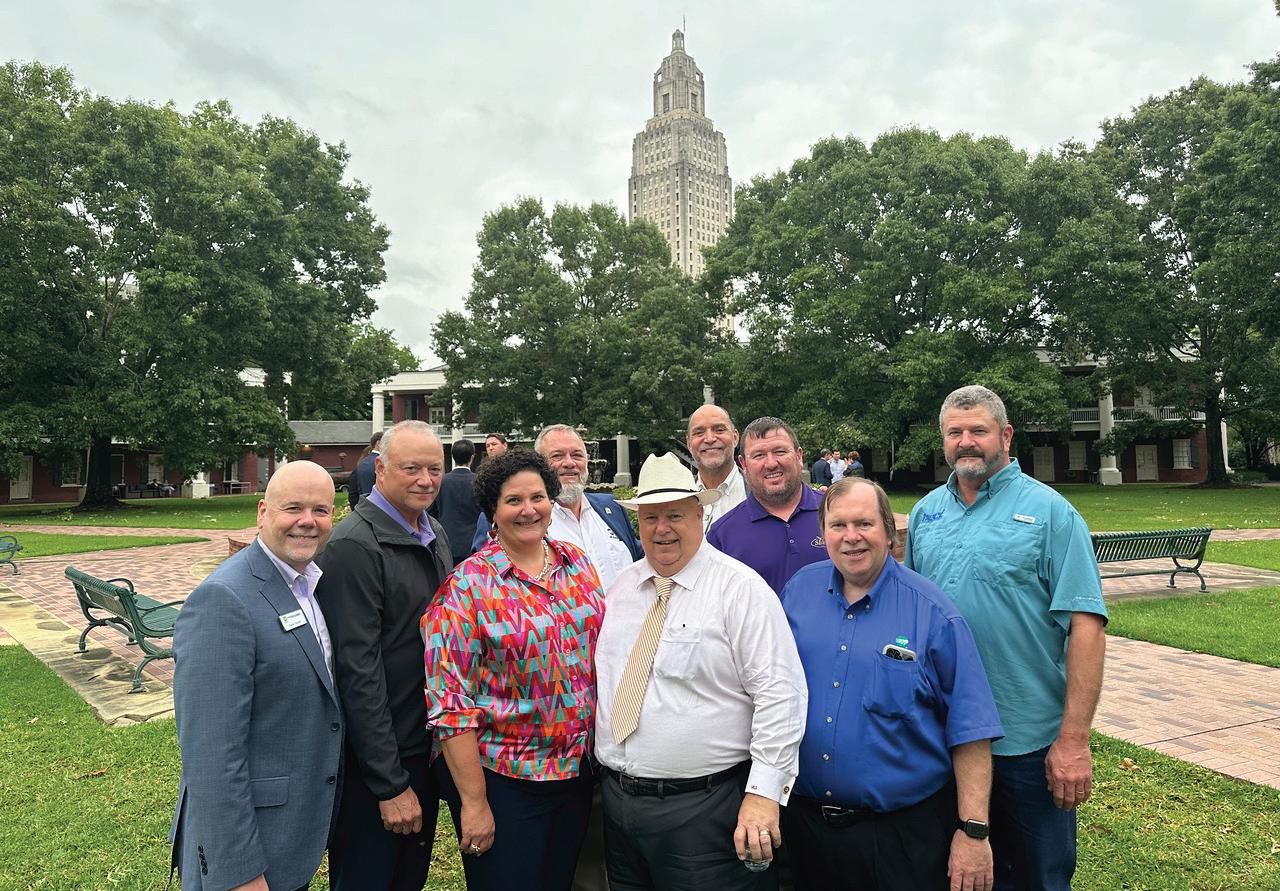




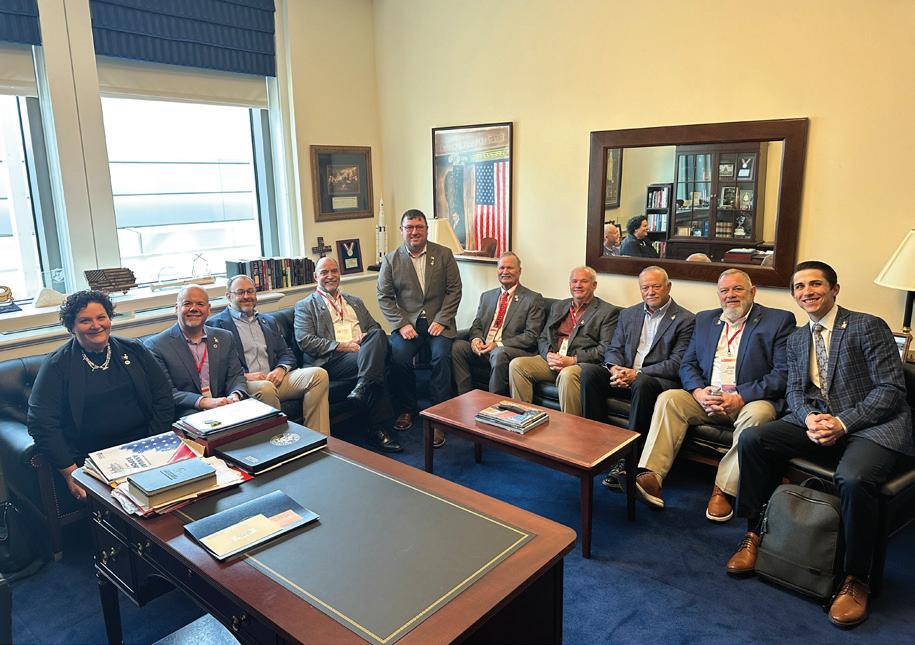
Louisiana electric cooperative leaders met in April with the state’s congressional representatives in Washington, D.C., to discuss topics important to the member-consumers they serve. The visit coincided with the National Rural Electric Cooperative Association’s Legislative Conference, which welcomes co-op grassroots advocates from across the country to the nation’s capital each year.
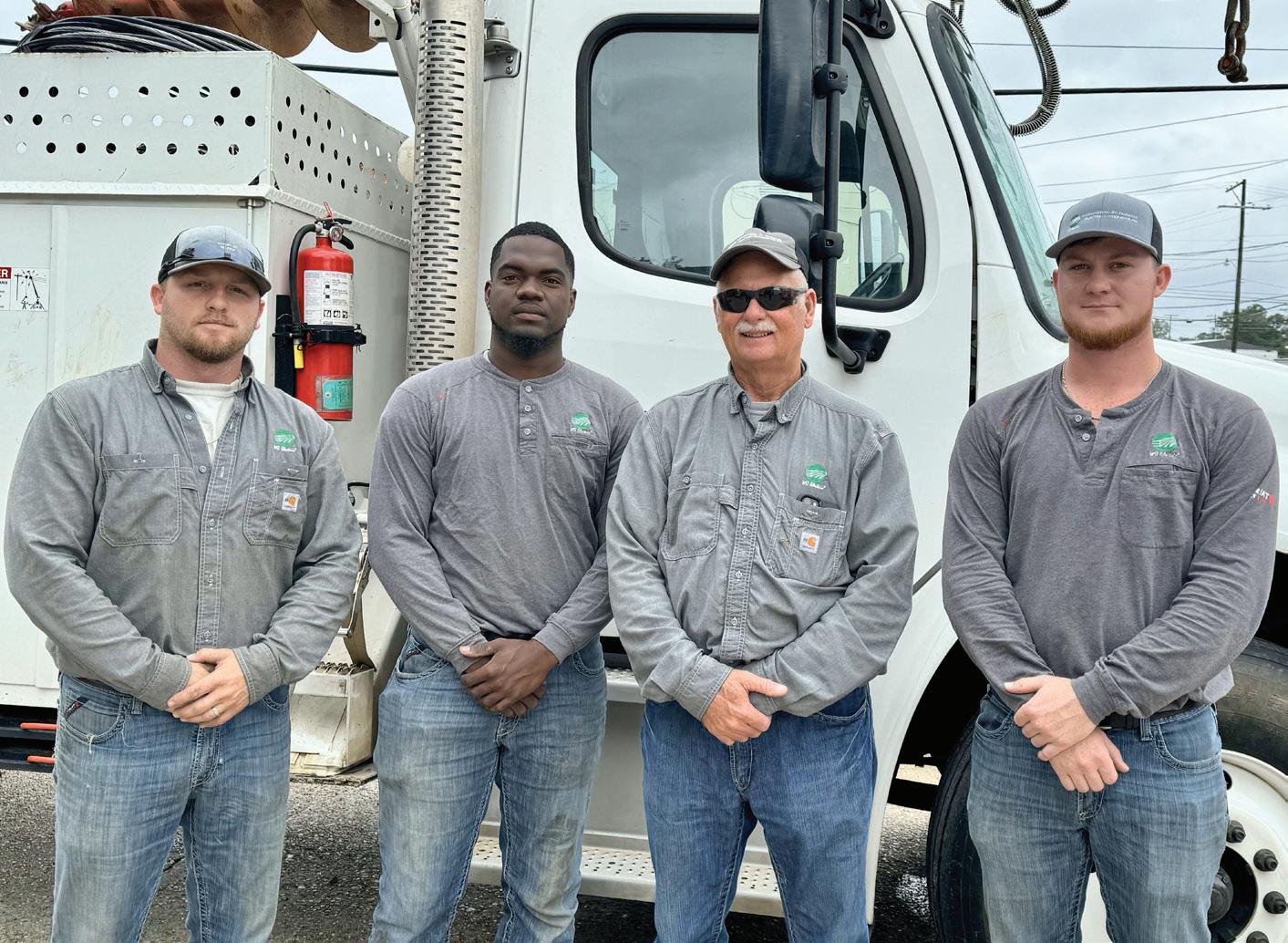
March, April and May Lineman Training at the Association of Louisiana Electric Cooperatives is an essential training of power infrastructure maintenance and safety.
This program brings lineworkers from across the state, providing them with advanced training and skills development crucial for their roles in ensuring the reliability and resilience of Louisiana’s electrical grid.
Through a combination of classroom instruction and hands-on practical exercises, participants honed their expertise in various aspects of the job, from intricate technical procedures to best practices in safety protocols.
Such dedicated training sessions enhance the competency of individual lineworkers and contribute to bolstering the overall preparedness and effectiveness of Louisiana’s power restoration efforts in the face of future challenges, including severe weather and emergencies.
When storms disrupt power supply, the urgency to restore electricity prompts swift action, often necessitating the deployment of skilled lineworkers from cooperatives such as Washington-St. Tammany Electric Cooperative to assist utilities—such as DEMCO—in their restoration efforts.
Trained to handle myriad challenges, these lineworkers embody resilience and expertise as they navigate hazardous conditions to repair damaged infrastructure, reestablishing vital connections and bringing relief to affected communities.
Their collaborative efforts epitomize solidarity in times of crisis, exemplifying the ethos of mutual aid and collective resilience, underscoring effective disaster response.

Advanced Underground (March 25-28): Josh Crain, Darius Dawson, Tyler Winstead and Lane Starkey. (Account No. 213341000)
Advanced LLTP 2024 (April 1-5): Brodie Moore, Zachary Buckindail, Koby Hathorn, Josh Crain and Tyler Winstead.
Advanced LLTP 2024 (April 15-19): Darius Dawson, William Howell, Triston Jones, Drew Moran and Lane Starkey.
Advanced LLTP 2024 (May 6-10): Nicholas Gholar, Brian Miller, Trevor Cooper, Tyler Bunn, Sammy Graves and Reginald Green.
Advanced LLTP 2024 (May 13-17): Hunter Jones, Grayden McDaniel, Jared Rome and Jake Williams.



By Cheré Coen
When her pan-seared red drum over tomato polenta with a crawfish cream sauce earned Amanda Cusey the 2022 Louisiana Seafood Queen title, many people likely thought the Lake Charles chef was a Bayou State native. However, Amanda’s life and career have taken her around the world, landing her in Louisiana only because her parents found work in the Lake Charles area.
“Butter makes everything better.”
“Don’t be afraid to try something new, and don’t be afraid to fail. And don’t be afraid to be weird.”


“Don’t overcook seafood. Seafood can be very delicate. If undercooked, you can always bring it back up.”

Originally from Flagstaff, Arizona, Amanda was living in North Carolina when her parents, both Chicago natives, encouraged her to join them in England, where they lived at the time. She accepted their offer and attended Cordon Bleu training at Tante Marie Culinary Academy in Surrey.
Amanda later worked in English gastropubs, an American diner in Ireland, and under chefs Kristan Burness and Brendan Ward at Fiorentina in Dublin, where she ultimately earned the head chef position. She worked briefly with Michelin star chef Oliver Dunne at his Italian-inspired pop-up restaurant, Eatily, in Dublin’s city center.





When Amanda’s parents grew tired of cold English winters, they began planning their return to the States. An engineering job brought them to Lake Charles, and Amanda followed. At first, the Southwest Louisiana town took some getting used to, but the hospitality Acadiana is known for quickly won her over.





















































“It’s quite grown on me,” Amanda says.
She first developed traditional Italian dishes inspired by her years in Europe to mix with Louisiana influences at The Villa in downtown Lake Charles. Now, she helms the kitchen at The Terrace restaurant at Lake Charles’ Family Entertainment Center, melding her European training with local dishes, flavors and ingredients.
The casual restaurant allows Amanda to bring her elevated cuisine to the masses. Dishes include shrimp and grits, fried blue oyster mushrooms with house-made garlic aioli, flatbreads, and fried shrimp coated in Bayou Satsuma Rum and toasted coconut.
In addition to her seafood title, Amanda was also awarded the title of Best Chef in Lagniappe magazine’s Best of SWLA awards, which was voted on by readers. She is the second woman to earn this recognition and the first Lake Charles chef.
She also headed to Charlotte, North Carolina, with chef Lyle Broussard of L’auberge Casino Resort of Lake Charles in 2023 to be paired with North Carolina chefs in a restaurant takeover experience.
The accolades have been “surreal, a really cool experience,” Amanda says.
Seeing Lake Charles’ culinary scene grow during the past eight years has also been rewarding.
“It’s been cool to watch,” she says. “The city’s definitely got a whole lot going on.”



















½ cup red peppers, diced
½ cup shallots, finely diced
1 pound Louisiana lump crabmeat, cleaned
1-2 lemons, depending on size, zested and juiced
¼ cup parsley, chopped
2 tablespoons garlic, freshly minced
2 teaspoons Cajun seasoning
1 cup panko breadcrumbs
¼ pound butter, melted
Salt and pepper, to taste
2 tablespoons oil
Saute the peppers and shallots until just tender. Add to a mixing bowl and combine with the rest of the ingredients. Adjust seasoning as needed. Cover and refrigerate for about an hour. Remove from fridge and form cakes to your desired size. Heat the oil and pan sear each side of the cakes until golden brown. If you made large cakes, you may need to pop them in the oven to heat them completely through.







































































































By Cheré Coen





























Louisiana is rich in culinary traditions, but how often do you consider where some of the tastiest ingredients originated? It’s even less common for people to experience these rich agricultural traditions firsthand. Fortunately, there are many opportunities throughout the state for folks to delve deeper into our food sources.






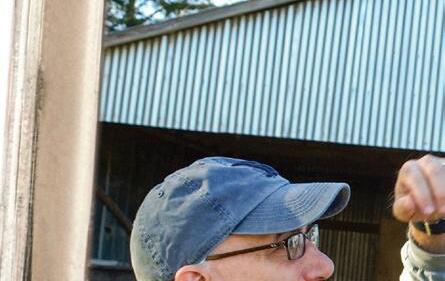






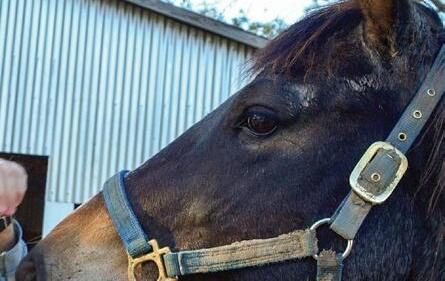





In the growing segment of the travel industry known as agritourism, participating businesses offer visitors a chance to immerse themselves in the agrarian way of life—whether milling rice, trapping crawfish or making hot sauces. From charming family-owned farms that offer accommodations to you-pick farms, destinations across Louisiana invite travelers to experience the rhythm of rural life, savor farm-fresh produce and engage in hands-on activities that celebrate the region’s agricultural traditions.
Bonne Terre Farm, Breaux Bridge





Breaux Bridge is a short drive from Lafayette, but Bonne Terre Farm feels like another world. This tranquil 10-acre working farm offers two quaint residences to choose from for an overnight stay. Guests can lounge in accommodations stocked with locally made amenities such as soap, fresh eggs, condiments and artwork. Owner Jennifer Gray is a Louisiana ambassador who loves sharing the state’s cultural offerings, and she often takes her guests on guided walking tours of the farm.


Jennifer loves her animal friends, and it shows. Visitors who stay at Bonne Terre don’t have to tour the farm, but Jennifer is happy to introduce them to her turkeys, horse, cow, geese and other friendly




























critters. On a scheduled tour, she expresses her appreciation of animals and the environment, believing immersion in a natural setting might be just the cure for many of modern life’s ills.







“It is a beautiful thing,” she says. “Animal therapy is a true science, and people benefit from it.”
Bonne Terre Farm, French for “good earth,” is for adults only. For more information, visit bonneterrelouisiana.com.


Other farm stays: Splendor Farms in Bush offers guest accommodations along with horseback trail riding, riding lessons and a petting farm. For more information, visit splendorfarms.com.



SonLight Farms in Bogalusa lets visitors pick their own blueberries or, if you’re feeling less hands-on, you can buy the fruit pre-picked and packaged. The family-owned and operated farm grows blueberries without chemicals. Be sure to call ahead,
information, call 985-241-0910 or visit the farm’s Facebook page.
Other berry-picking farms: Landry-Poche Farms in Springfield offers field trips for students and parents in the spring and an annual Family Fun Day. For more information, visit landrypochefarms.weebly.com.






Bachman Blueberries in Bush supplies a bucket, and you pick the berries. The season ends midsummer. Be sure to wear closedtoe shoes and bring water, bug spray and sunscreen. Visit the Bachman's Facebook page for updates.


Just north of Kaplan, Barry Toups takes visitors and residents out to his crawfish ponds, where he explains the business of raising Louisiana’s favorite crustacean. After the tour, visitors can enjoy their caught bounty boiled and served.
Barry is the proprietor of the circa-1903 Crawfish Haven/Mrs. Rose’s Bed and Breakfast, which offers three guest rooms. His tours put visitors in boats puttering through his ponds to retrieve what will be their supper. He fits six people in a boat at a time and pulls up 50 to 100 traps. Afterward, he boils the crawfish and serves up 5 pounds per person.


“We explain all about the life of the crawfish,” Barry says. “It’s very educational. The whole process is two to three hours, depending on how many questions they have.”











































Barry’s crawfish excursions run December 1 through midMay or June 1, depending on that year’s crop. This year was more sparse than usual due to last summer’s drought. He speaks French, so many of his clients hail from across the Atlantic.






Barry’s tours have become so popular, he’s been on many television shows and in The New York Times Magazine. For more information, visit www.crawfishhaven.net.
Other crawfish tours: Jeff Davis Parish Tourism offers crawfish tours that take visitors from the boat to the processing plants. For more information and to book a tour, visit jeffdavis.org/tourism.









Team Voodoo Crawfish Tour is offered near Breaux Bridge. For information, visit www.crawfishtours.com.
Tabasco


The same pepper sauce recipe used by Edmund McIlhenny back in the mid-1800s is still used today at Tabasco’s factory on Avery Island outside of New Iberia. Visitors to the factory get to watch the blend of Tabasco peppers, salt mined from Avery Island and high-quality distilled vinegar aged in white oak barrels create one of the world’s most recognizable brands.



transmission. Attendees see much of the mill’s original equipment, view a slide presentation of Acadian history and browse the Konriko Co. Store that sells cookbooks, crafts, Cajun music and local food products, including Konriko rice fresh off the mill.













Tours are offered on the hour between 10 a.m. and 3 p.m., Mondays through Saturdays. Learn more at www.conradrice.com.

“It’s remarkably interesting for a short tour,” says New Iberia author Lynn Shurr, who brings visiting guests there. “There is also a good movie beforehand, free samples of coffee and food in the store and the best assortment of souvenirs in the entire town.”
Visitors also learn about Tabasco history and artifacts, view the pepper-growing process, get a look at the aging process in the mash warehouse and sniff from the vats where the magic happens. The factory compound also includes a restaurant and gift shop.
For information on the self-guided tours, visit www.tabasco.com.



New Iberia is home to America’s oldest operating rice mill, and a tour shows visitors how rice milling came about.
Conrad Rice Mill was built in 1912 and is an example of the factory’s use of a turn-of-the-century belt-driven power





There’s a stretch of northwest Louisiana where sunflowers grow tall and wide. Folks in this region honor this bright, sunny flower every June with the annual Sunflower Trail and Festival in Gilliam, but visitors can enjoy the bright yellow blooms throughout the summer by driving the Sunflower Trail.
This scenic drive along Route 3049 and Sentell Road, south of Belcher, features a sunflower maze, wildflower fields, zinnia blossoms and historic stops, including the Veterans Memorial in Belcher, Crossroad Museum in Gilliam, Northrose Plantation in Dixie and more. Sunflowers along the trail are in full bloom and are expected to last through July.










ALEXANDRIA
Alexandria Farmers Market


Crescent City Farmers Market







3-6 p.m. Tuesdays, 2727 Jackson St.
LAKE CHARLES
Charlestown Farmers Market
8 a.m.-noon Saturdays, 1001 Ryan St.
Cash & Carry Farmers Market
4-6 p.m. Tuesdays, 801 Enterprise Blvd.
SHREVEPORT


Shreveport Farmers Market
7:30 a.m.-12:30 p.m. Saturdays, through Aug. 24, Festival Plaza, 101 Crockett St.
St. Francisville Farmers Market
8 a.m.-noon Saturdays, barn at 9961 Wilcox St.


New Orleans markets are held weekly at City Park, Uptown Square and Mid-City. Details are online at www.crescentcityfarmersmarket.org.
Red Stick Farmers Market


Year-round markets are Thursdays: 8 a.m.-noon, Pennington Biomedical Center, 6400 Perkins Road; Saturdays: 8 a.m.-noon, North Fifth and Main streets, downtown Baton Rouge. Seasonal markets are 3-6 p.m. Tuesdays at the East Baton Rouge Parish Library, 7711 Goodwood Blvd; and 9 a.m.noon Wednesdays at the Exxon Mobile YMCA, 7717 Howell Blvd.





Natchitoches Farmers Market




8 a.m.-noon Saturdays, through July 27, 100 Rue Beauport
Houma’s Market at the Marina
8 a.m.-noon, first Saturday of the month, downtown Houma Marina
LAFAYETTE





Lafayette Farmers & Artisans Market
8 a.m.-noon Saturdays, Moncus Park




































Saturdays through August 24.







Weatherizing your home provides energy savings and comfort yearround, especially during summer months when your air conditioner is working overtime.
A home with insufficient insulation and air leaks wastes more than 20% of the energy used to heat or cool the home, according to energystar.gov. Fortunately, most weatherization projects are DIY and can be completed in a day.
The simplest and most cost-effective weatherization strategies include air sealing around windows and exterior doors.
If you have older windows, odds are you have air escaping through cracks and gaps around the frame. If you can see daylight around the frame or if the windows rattle easily, you likely have air leaks. Also check for small cracks around the frame that may not be visible with sunlight.
If you suspect you have leaky windows and plan to apply new caulk, be sure to remove the old caulk and clean the area before application. Caulking materials vary in strength and properties, but you’ll likely need a half-cartridge per window.
Silicone caulk is a popular choice and can also be used to seal joints between bathroom and kitchen fixtures.
Another effective but simple weatherization project is installing weatherstripping around exterior doors. The most common types of
weatherstripping options are V-channel, felt and foam tape. Choose the best for your home by considering temperature fluctuations and weather exposure. Most homeowners opt for felt or foam tape; both are easy to install but need to be replaced every couple of years, depending on wear and tear. Weatherstripping should be installed around the top and sides of the door.
If you see daylight around the bottom of an exterior door, consider installing a door sweep in addition to weatherstripping.
Weatherstripping can also be installed around windows. Another way to improve comfort in your home is with insulation. While this is a more costly project and requires a professional’s help, it’s an effective way to decrease heat flow.
Older homes may need additional insulation to replace older materials or meet newer efficiency standards. Contact a qualified installation specialist if you suspect insulation levels are inadequate. The best way to identify air leaks in your home is a blower door test. A blower door test helps determine how airtight your home is and identify air leaks.
In addition to saving energy, air sealing can help avoid moisture control issues, improve indoor air quality and extend the life of your heating and cooling system. Weatherize your home to unlock yearround comfort and savings on monthly energy costs. n


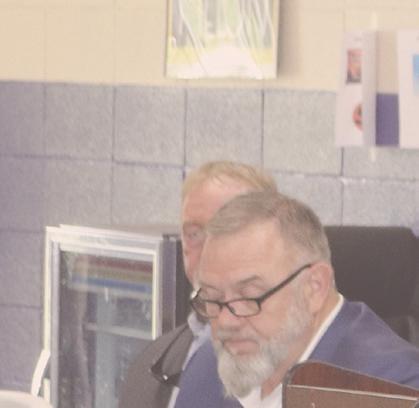














In a display of unity and confidence, the recent election unfolded as an uncontested affair, marking a rare moment of consensus by our membership.
With no challengers stepping forward against the incumbent, the ballot became a symbol of collective trust and endorsement. Such an occurrence spoke volumes about the incumbent’s track record of effective governance, resonating deeply with a populace that embraced continuity over change.







The uncontested election stood as a beacon of stability and confidence in the democratic process, affirming the members’ belief in the chosen leader’s ability to steer the course with wisdom and foresight.
The board of directors is grateful for members’ confidence in the board’s leadership. As a cohesive team, we continue maintaining your cooperative’s highquality service and competitive rates. (Account No. 480130202)

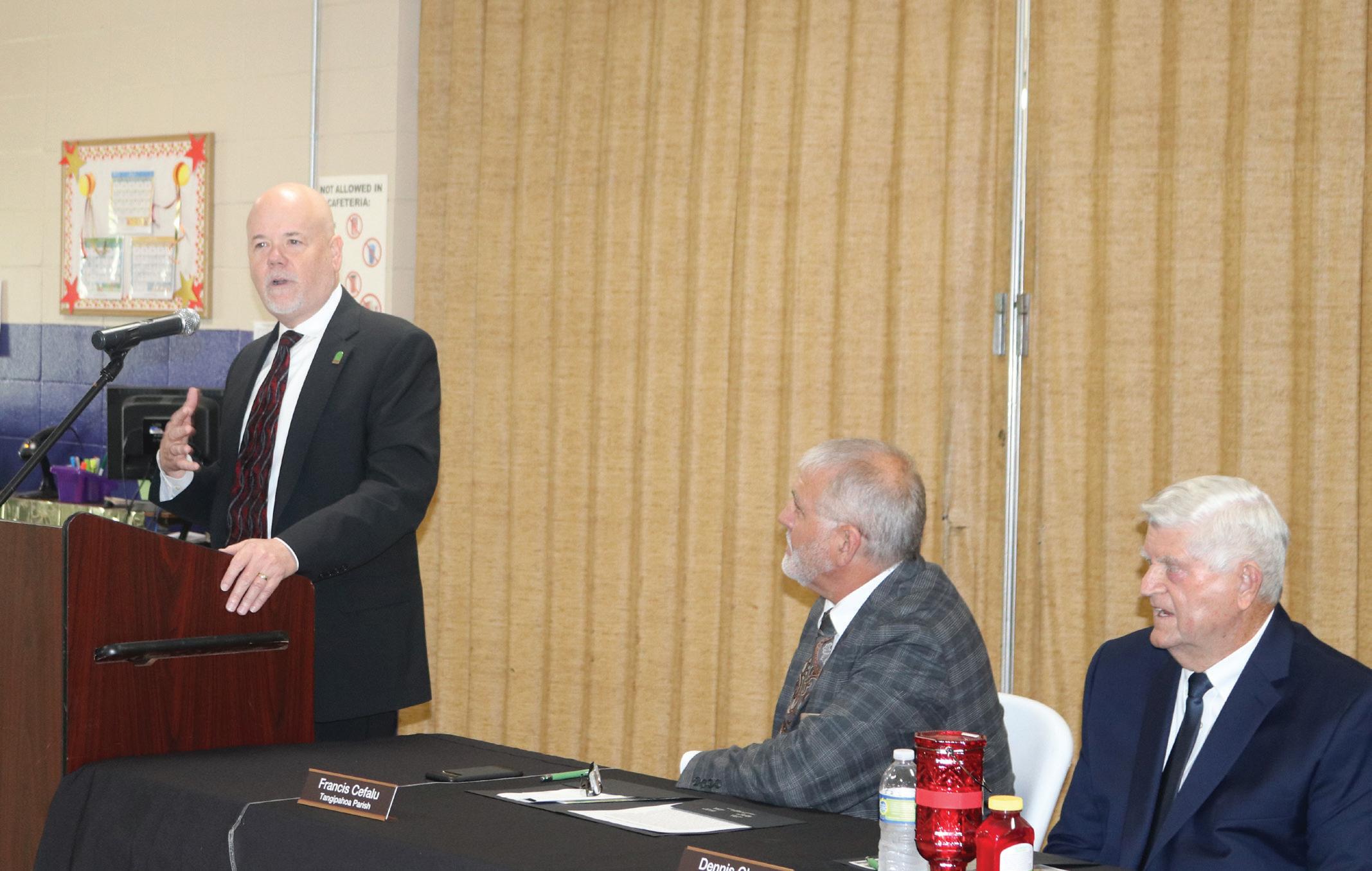
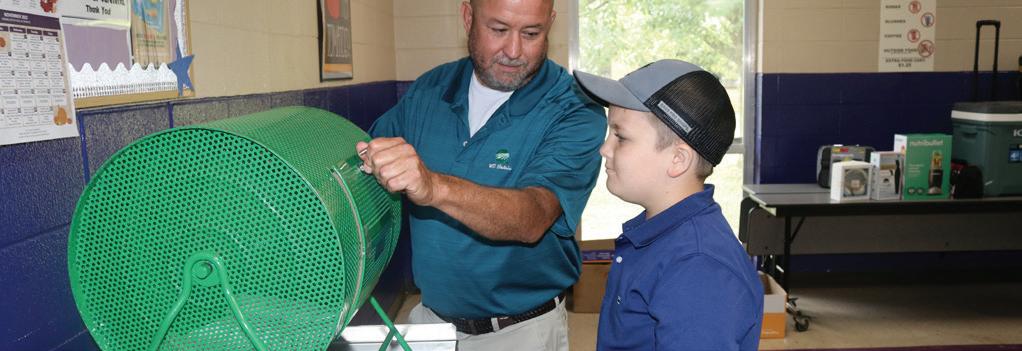
That firm foundation of support has built the cooperative we have today. You are the reason Washington-St. Tammany Electric exists and you, as owners, are our main concern.
As we govern, we keep in mind that we represent the members. Every decision within the cooperative is based on the best interests of the members.
However you slice it, WSTE is a local business powering local economies with local connections. We are also members, elected by you and guided by a set of internationally recognized principles, doing what it takes to provide the best and most reliable service possible.
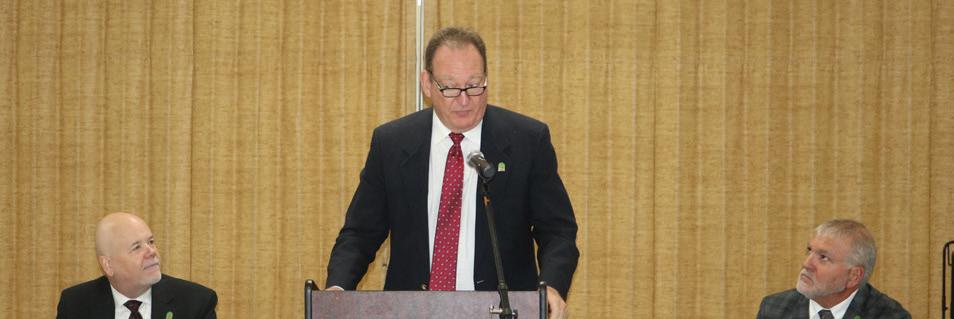
In some cases, we share service and employees, relying on one of our founding principles, Cooperation Among Cooperatives. When a hurricane lashes the coast, neighboring co-op lineworkers answer the call for mutual aid.
We are one big family helping each other in times of need. No matter the challenges, we can take pride in our history and how much we have overcome by working hard. It is a privilege to work for you.
WSTE Board of Directors
































In today’s digital age, utility scams are on the rise, targeting consumers of water, gas and electricity. Scammers are becoming more sophisticated, exploiting technology to deceive people through various means, such as phone calls, texts, emails and deceptive websites.
Here’s what you need to know to protect yourself:
Recent scams include imposters posing as utility representatives, demanding immediate payment to avoid service disconnection. They may also claim you’ve overpaid and offer a refund in exchange for personal information.
Spotting a scam involves watching for high-pressure tactics, unusual payment requests—such as gift cards or cryptocurrency—and signs of poor communication quality, such
as misspellings and incorrect grammar.
Do not make instant payments or share personal information over the phone or via email. Your co-op provides secure payment options and never demands immediate payment or requests sensitive details via these channels.
If you’re unsure about a communication claiming to be from your co-op, hang up and call the office directly to verify.
To avoid scams, be cautious of unknown individuals requesting personal information, and report any suspicious activity.
By staying vigilant and communicating with your utility provider, you can help protect yourself and your community from fraud. n
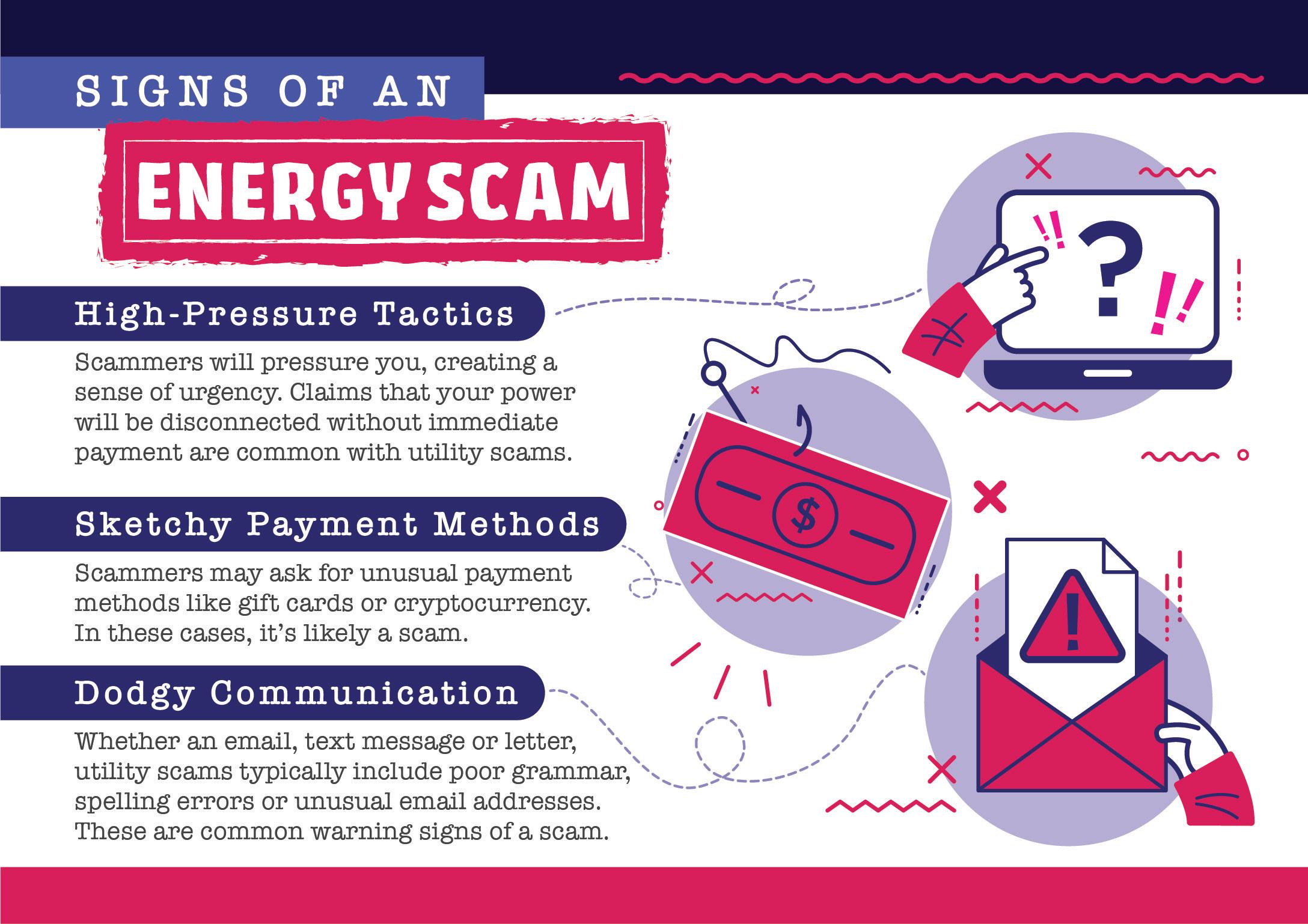

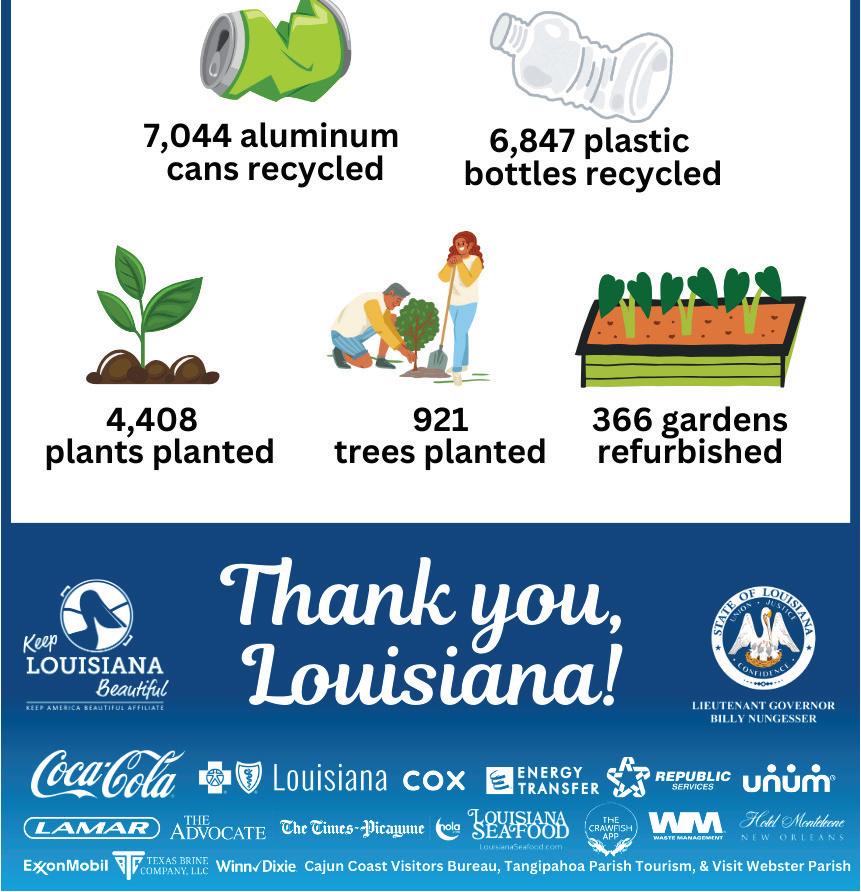
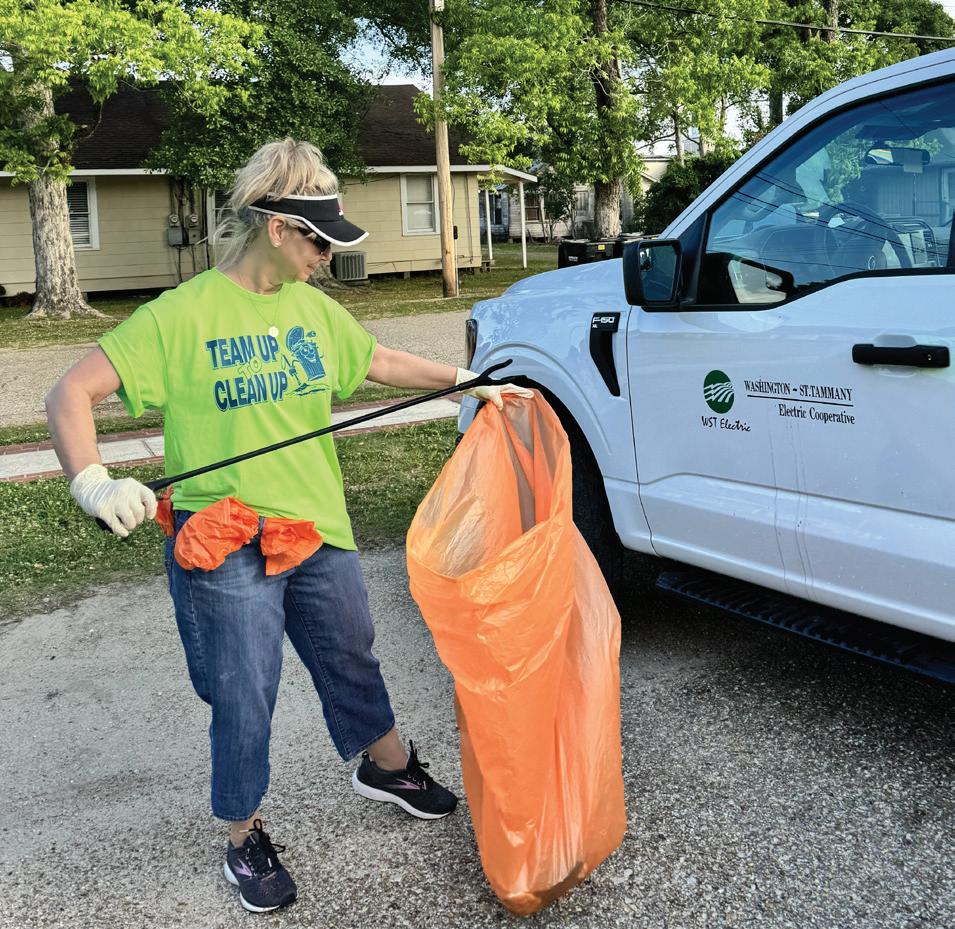
Washington-St. Tammany Electric and Del Sol joined forces April 27 with Washington Parish and the State of Louisiana for Love the Boot and the chamber’s Team Up to Clean Up in Franklinton, a collaborative effort to beautify our beloved state.
The impact of our collective endeavor was nothing short of impressive, as volunteers came together to tackle the pervasive issue of litter.
Armed with gloves, trash bags and an unwavering commitment to environmental stewardship, we embarked on a mission to clean up our communities and preserve the natural beauty of the Boot.
As we traversed the streets and areas of Franklinton, the magnitude of the litter problem became apparent, but so did the power of collective action.
With each piece of trash picked up, the aesthetic appeal of our surroundings was restored and a powerful message of unity and responsibility was sent. The sense of pride and satisfaction that accompanied our efforts was palpable, serving as a testament to the positive change that can occur when individuals and organizations come together for a common cause.
By volunteering, WSTE and Del Sol demonstrated unwavering commitment to making a tangible difference in our communities. Through our combined efforts, we removed litter from our streets and areas in Franklinton, and we inspired others to take ownership of their communities and work toward a cleaner future for all.
Together, we demonstrated that even the smallest acts of service can yield remarkable results, leaving a lasting impression of responsibility and care for our shared environment.













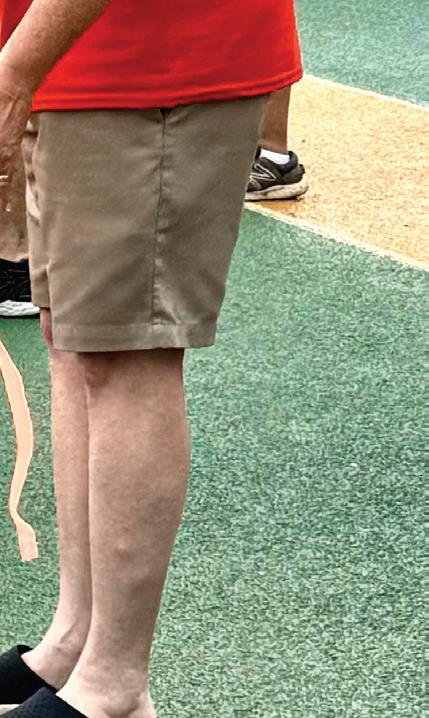

Volunteering May 18 for the Louisiana Special Olympics Summer Games at Southeastern Louisiana University was a profoundly rewarding experience, marked by moments of joy, inspiration and spirit.
Washington-St. Tammany Electric Cooperative teamed with Del Sol to volunteer for the track and field events, embodying the cooperative principle of Concern for Community.
As participants converged on the campus, adorned in team colors and wide smiles, it was evident this event held significance for all involved. Serving in various capacities—from timing events or marking jumps to cheering from the sidelines—volunteers became integral to the execution of the games, embodying the spirit of inclusivity and support that defines Special Olympics.
Witnessing the determination and resilience of the athletes was nothing short of awe-inspiring.
Participants showcased dedication and courage, while defying odds and surpassing milestones with every stride and stroke.
Being part of their journey was humbling and invigorating. Whether offering words of encouragement, helping athletes navigate event venues or sharing in their triumphs, every interaction underscored the transformative power of sports in fostering inclusion, confidence and camaraderie.
Beyond the realm of sports, the event created an atmosphere of celebration and acceptance, where differences are celebrated and barriers dismantled.
Volunteering for the Louisiana Special Olympics Summer Games was an

unforgettable experience. We left with hearts full of gratitude and a renewed appreciation for the transformative power of sports in uniting communities and transcending barriers.
Have you ever watched a video or TV show where a person is cooking a meal, then suddenly they snap their fingers and the meal is plated and ready to eat? That’s called a jump cut. While everyone wishes we could “jump cut” from a power outage to power restoration, it often takes a lot more effort and people to make it happen.
It’s natural for members to have questions about power outages and why it can take time to get the lights back on. Given our reliance on electricity, there’s simply never a good time to be without it.
Here’s a behind-the-scenes look at the restoration process to help members understand what may be happening when the power is out.
We rely on you to let us know if your power is out. When your power goes out, it might be just at your home or a small section of your neighborhood. There is a chance your cooperative may not know about it, and no one has reported it.
When you’re without power, co-op employees might be, too. Because we are local electric cooperatives owned by the members we serve, employees are local. They are your neighbors, friends and familiar community volunteers. It’s a team effort. Every co-op employee works to get power restored as soon as possible. Member service representatives take your calls, engineers and field staff survey damage, the vegetation management team clears hazards, dispatchers organize crews, and communicators keep everyone informed of progress or potential dangers. When the power goes out, everyone on the team works together as quickly and safely as possible to restore it.
4. 5. 6. 7. 8.
Assess the situation. Every outage is different, and in the very beginning it’s hard to know how dangerous it is or whether equipment might need to be replaced. When responding to outages, the first step is to see what happened, then figure out which materials are needed and then create a plan for how to fix the problem(s) without compromising electric flow for the rest of the members. Restoration is normally prioritized by the largest number of members that can get back on in the shortest amount of time. Crews focus on responding first to public safety issues and critical services such as hospitals. Then work is completed that impacts the largest number of people first.
Co-op employees face many dangers. Besides working around high-voltage electricity, crews are on alert for wild animals, weather elements, falling trees and fast-moving cars. If you ever drive past a utility vehicle, please do so slowly.
Flickering lights are a good thing. Some folks mistake flickering lights for outages, but these “blinks” are important because they indicate the equipment worked and prevented a possible outage likely caused by wayward animals or stray tree limbs on the lines. You need a backup plan. If you depend on electricity for life support purposes, you must have a backup plan. Remember, it’s not always known how long restoration efforts will take. 1. 2. 3.
9.
Employees have to plan and eat. If you ever see co-op trucks in a restaurant parking lot while your power is out, know that sometimes employees huddle in a safe, common area to map out the strategy for getting the power back on. Also, crews work long, hard hours during outages and need to take time for meals, just like everyone else.
10.
Sometimes it’s a waiting game. Each portion of the power grid is connected to other electric utilities, and positive relationships are maintained with power providers interconnected to our system. If an outage is due to an issue from their feed into the system, they must repair it.
Periodic power disruptions are inevitable. If the lights go out, know your co-op team is working as quickly and safely as possible to restore power.
There is never a good time for the power to go out, but if it happens on a sunny day, you might be left wondering why. Here are the most common causes of a power outage.
High winds, snow and ice can cause tree limbs to fall on power lines. Other weather effects, like wildfires and lightning strikes, can cause major damage to equipment.
Squirrels, birds, snakes and other animals can inadvertently contact power lines, causing short circuits and disruptions to electrical supply.
Scheduled
Occasionally, we plan outages to perform upgrades or repairs to parts of the local grid. MAINTENANCE
Vehicles can crash into utility poles, bringing down power lines. Construction and excavation work can also result in disruptions to underground lines.

